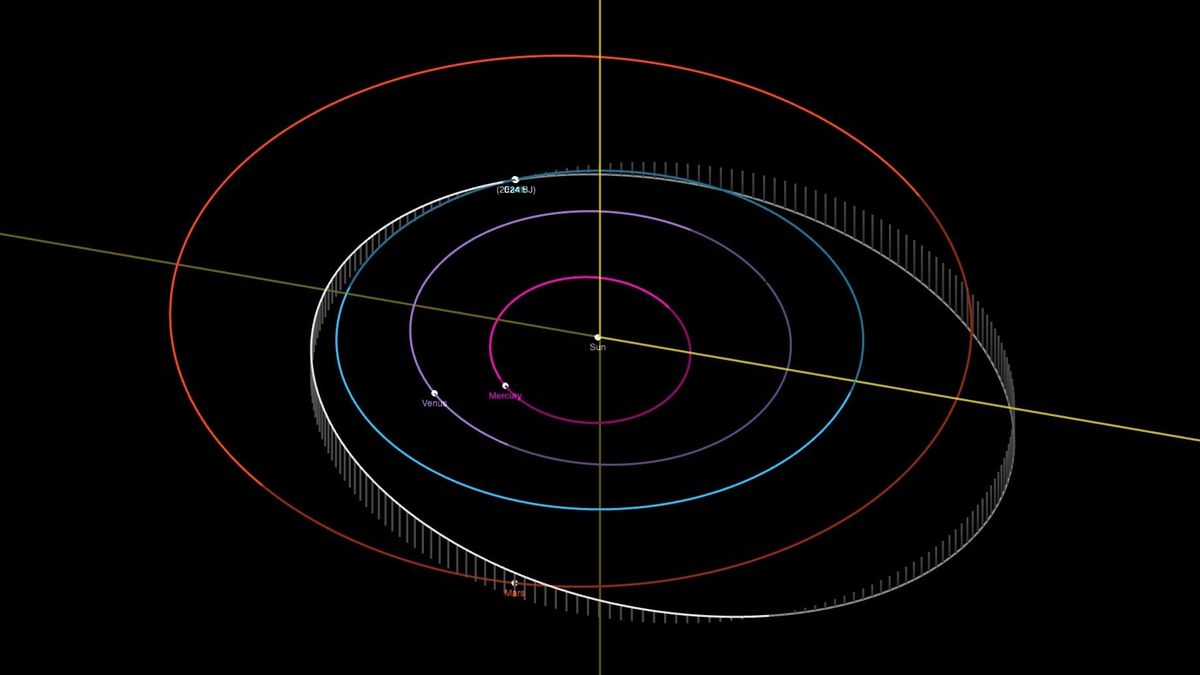Watch newly discovered asteroid fly between Earth and moon on Jan. 27 (video)
The space rock poses no threat to our planet, despite being on a path to zoom between Earth and the moon.
Update for Jan. 28: Astronomer Gianluca Masi was able to capture some fascinating footage of asteroid 2024 BJ during its flyby of Earth on Jan. 27. Watch the space rock zoom by our planet on Space.com (above) thanks to the Virtual Telescope Project or on the project's YouTube channel.
An asteroid discovered earlier this month will reach its closest point to Earth on Saturday (Jan. 27), when it will soar through the sky at a distance closer to us than the moon.
Astronomers first detected the up to 121-foot-wide (37 meters) asteroid, dubbed 2024 BJ, on Jan. 17. They documented their discovery the following day, after calculating that the rock will safely soar past our planet without incident.
The asteroid will fly close to the moon just before 9 a.m. EST (1400 GMT) before zooming past Earth three and a half hours later at an estimated speed of 14,200 mph (22,850 km/h). The flying space rock will reach its closest point to Earth at 12:30 p.m. EST (1730 GMT), according to NASA.
You can watch the airplane-size asteroid as it sails just 220,000 miles (354,000 kilometers) from Earth — more than nine tenths of the average distance between our planet and the moon — on a Virtual Telescope Project livestream from 12:15 p.m. EST (1715 GMT). On the live, you can expect to see the asteroid as a white speck moving quickly among the background stars.

2024 BJ is a near-Earth asteroid of the Apollo type, which means its egg-shaped orbit crosses that of Earth to reach its closest point to the sun before turning around and extending out toward the main asteroid belt between Mars and Jupiter.
Get the Space.com Newsletter
Breaking space news, the latest updates on rocket launches, skywatching events and more!
Apollo asteroids, of which over 1,600 are currently known, make up the majority of the population of Earth-crossing and potentially hazardous asteroids. But fear not: 2024 BJ is nowhere near large enough to be considered hazardous. In fact, Earth appears to be safe from asteroids — at least from cataclysmic, "planet-killer" ones measuring more than 0.6 miles (1 km) across — for the next 1,000 years.
And if a currently unknown planet-killer should happen to sneak up on us — say, from the direction of the glaring sun — scientists already have a few plans for dealing with such an Earth-threatening catastrophe, including attempting to deflect the space rock with rockets, or possibly with nuclear weapons detonated in space. Hopefully, we'll never have to put such a mission to the test.
Join our Space Forums to keep talking space on the latest missions, night sky and more! And if you have a news tip, correction or comment, let us know at: community@space.com.

Sascha is a U.K.-based trainee staff writer at Live Science. She holds a bachelor’s degree in biology from the University of Southampton in England and a master’s degree in science communication from Imperial College London. Her work has appeared in The Guardian and the health website Zoe. Besides writing, she enjoys playing tennis, bread-making and browsing second-hand shops for hidden gems.










